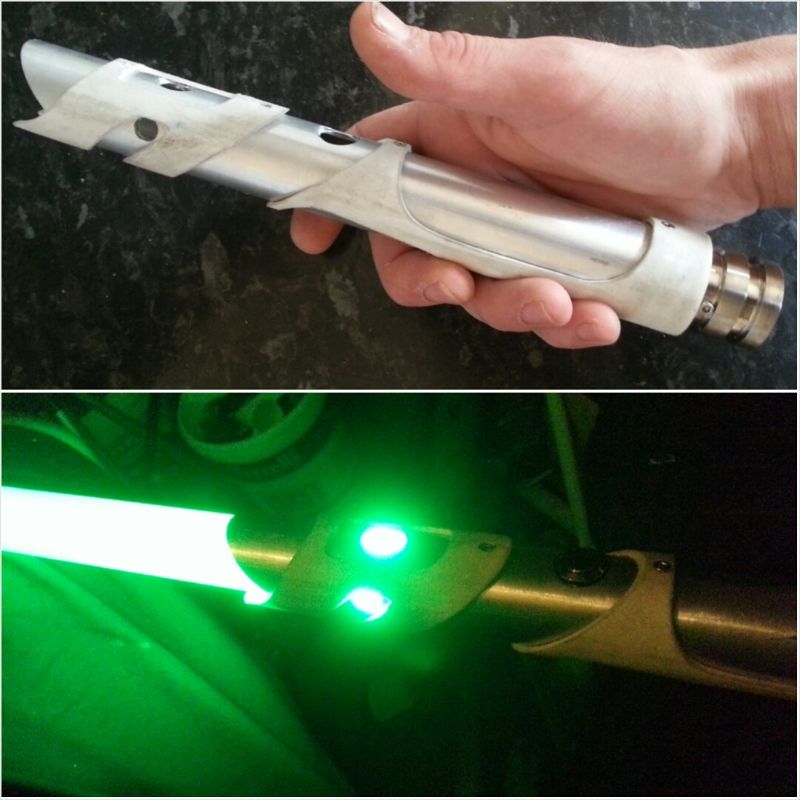Hi guys
I've been making custom/replica props in my spare time for a few years now and one I keep revisiting as my skills develope is the lightsaber.

This time I'm upping the ante and making my own custom PCBs for my projects. I built a PCB fabrication lab (most of it anyway) so I didn't have to deal with loose running wires and the constant repairs that go with fitting that kind of setup.
I've already made a good start on a new PCB layout, and I'm just extending it as I add additional functions (board width has to remain within 20mm, I can extend it to 5 or 6 inches if necessary).

With a bit of luck the full board will include all of the following:
• charge management
• charge status indication
• soft latching switch
• embedded audio
• sound amplification
Charge management/indication is an obvious one for me as it saves having to remove the battery. I'm using an MCP73833 and GTR CR123A combo. The battery has a PCB mount holder on the blank side, the SMD components are on the other (still doing single sided but I'll get there).
The soft latching switch is both timely and a godsend.
It's timely as I happen to be learning about transistors n fets on an EE course I'm on and thought it would be a bit of handy practical to include it in the circuit.
I found out about latching circuits during some side research. The trail eventually led me to the design I'm going to use provided by this site:
http://www.edn.com/design/power-management/4427218/Latching-power-switch-uses-momentary-pushbuttonIt's a godsend because fitting bulky panel mount latching pushbuttons to 10" x 30mm tubing is just the pits (if you like puzzles, give it a try, I dare you. Your choice is: try and fit a nut on a button thats mounted half way down the shaft langth, or, tap threads and risk twisting the wires off screwing the button in).
This finally brings me to my reason for posting (soz about the waffling). I need some suggestions for integrating audio.
Anyone know of a decent multi addressable playback IC that isn't discontinued, unsupported, badly documented, overly expensive, or available but only come in batches of a million and in obligatory repeating orders.
I bought a Nuvoton ISD2540 and a 1700 way back but it looks like both fall into at least two of the catagories above and without the software/hardware/accurate data support for them, I've been reluctant to try them out (I know my limits, I'll just go and let all the magic smoke out lol) so I've been looking for current/up to date alternatives but have been met with little success.
Any suggestions for solving this one would be most welcome.
For the amp I'm thinking a 1w digital, or 2w and a stick a boost buck in the mix, though finding a way to actually store and play sound has been taking up most of my left over free time (when I get any that is).